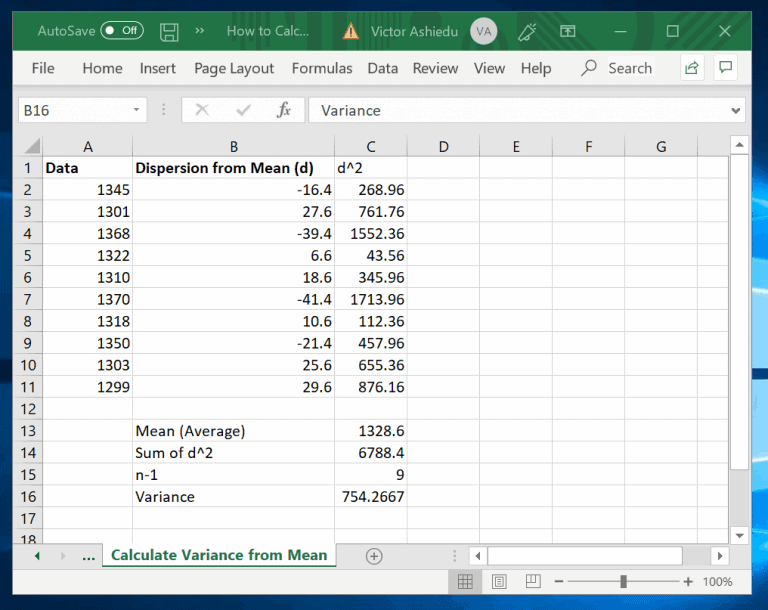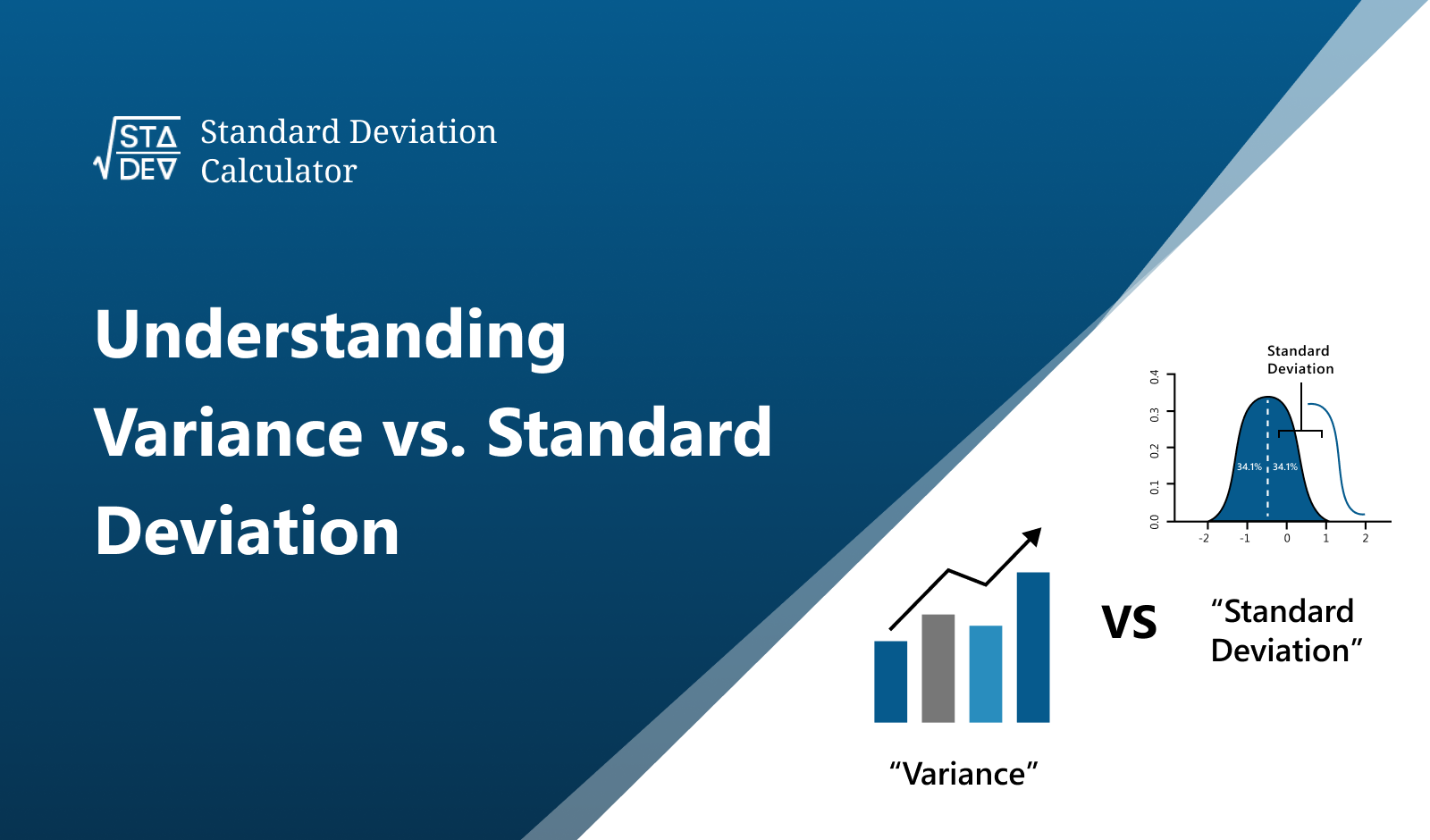Step by Step Calculation

Whether you’re looking at a full dataset or a smaller sample, using the right type of variance ensures reliable results. Depending on your data set, Excel offers several functions to calculate variance, including VAR.S and VAR.P. It measures the difference between expected and actual results, showing whether you’re over or underperforming. The variance for a population is equal to the population standard deviation squared. We mentioned earlier that the variance is equal to the standard deviation squared. So, to find the variance using the standard deviation, raise the SD to the power of two.
What is the range of variance?
The variance calculator is a great educational tool that teaches you how to calculate the variance of a dataset. The calculator works for both population and sample datasets. To calculate the mean, add each observation in the dataset together, then divide the result by the sample size (or population size). The variance is one of the measures of dispersion, that is a measure of by how much the values in the data set are likely to differ from the mean of the values. It is the average of the squares of the deviations from the mean.
How to Calculate Variance
- When you do not have data for the entire population, you calculate the sample variance from the sampled data.
- For an unbiased statistic, we expect to get a standard deviation of 4 and a variance of 16.You may notice that dividing by (n-1) yields better results than dividing by n.
- It helps asset managers improve the performance of their investments.
- In addition, this calculator also displays mean, standard deviation through step-wise calculation.
- Follow these steps to measure the variance for the given data set using this formula.
When working with a sample, the population variance is a biased estimator of the variance in the underlying distribution. The mean is equal to the sum of each observation xi divided by the population size N. The square root of the variance gives the result of the standard deviation.
How to Conduct Variance Analysis in Excel?
Typically the standard deviation is the preferred measure of dispersion since it is expressed in the original measurement units, unlike the variance. Our variance calculator will also output the standard deviation. We show the calculated squared deviations from the mean for all quiz scores in the table below. The “Deviation” column is the score minus 7, and the “Deviation2” column is the previous column squared. This standard deviation calculator uses your data set and shows the work required for the calculations. Did you know that companies using data analysis tools like Excel are five times more likely to make faster decisions?
The variance for a population is equal to the sum of squares divided by the size of the population. The population variance is the expected difference between a man’s height and the average man’s height, squared. Although variance is a trait of probability distributions, it is also commonly calculated from data. If you have many outcomes that all come from the same probability distribution, for example, men’s heights, then that entire set of data has a mean and variance.
The formula for variance: population variance vs. sample variance
For finding the range of variance, take the maximum value and subtract the minimum value. Now, find the root mean difference of data value, you need to subtract the mean of data value and square the result. Our online calculators, converters, randomizers, united states tax court and content are provided “as is”, free of charge, and without any warranty or guarantee. Each tool is carefully developed and rigorously tested, and our content is well-sourced, but despite our best effort it is possible they contain errors.

To calculate variance, take the arithmetic mean of the differences between each data point and the dataset mean. To avoid underestimating the variance of a population (and consequently, the standard deviation), we replace N with N – 1 in the variance formula when sample data is used. Learning how to calculate variance is a key step in computing standard deviation.
Please use the following CTAs to install the tool of your choice and create beautiful visualizations with a few clicks in your favorite tool. But let’s be honest—Excel’s data visualization tools often leave much to be desired. Charts are limited; making them look good can take longer than the analysis.
You can use this tool to understand and solve complex and lengthy variance problems. Variance calculator and sample variance calculator with a step-by-step solution and APA format. Scientists can look for differences between test groups to determine if they are similar enough to test a hypothesis successfully. The higher the variance of the data set, the more scattered the values in the data set. Data researchers can use this information to see how well the mean represents the data set.
Thus, the variance for a population σ² is equal to the sum of squares ∑(xi – μ)² divided by the population size N. The variance is equal to the sum of squares SS divided by the sample size n minus 1. The variance is equal to the sum of squares SS divided by the population size N. Enter a data set for a population or sample to calculate variance using the calculator below. This variance finder will give you the number of samples, mean, standard deviation, and variance in one click.
In statistics, the variance of a random variable is the mean value of the squared distance from the mean. It shows the distribution of the random variable by the mean value. To use this variance calculator, follow the steps that are given below.
Recent Comments